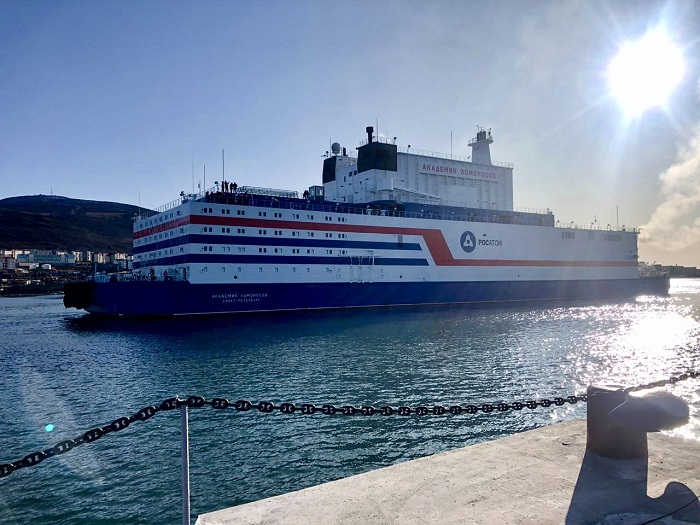The floating power unit Akademik Lomonosov has arrived at the port of its permanent location in Pevek, Chukotka, in Russia's Far East, where it is being docked to start operations by the end of this year. Once commissioned, it will become the world’s first operational nuclear power plant based on small modular reactors (SMRs) technology; and a ‘working prototype’ for reliable source of low-carbon energy supply in remote areas.

ROSATOM’s Director General Alexey Likhachev said: "It’s maybe one small step for sustainable development in the Arctic, but it’s a giant leap for the decarbonisation of remote off-grid areas, and a watershed in the development of small modular nuclear power plants in the world".
The project has been welcomed by scientists, nuclear energy experts and environmentalists across the world.
Agneta Rising, Director General of the World Nuclear Association, said: "To meet the nuclear industry’s Harmony goal of supplying at least 25% of the world’s electricity by 2050 we will need to bring the benefits of nuclear energy to more people in a wider range of locations. The Akademik Lomonosov is the first of a new class of small, mobile and versatile nuclear power plant that will supply clean and reliable electricity, heat and water, helping meet the UN’s sustainable development goals".
Akademik Lomonosov is a pilot project and a ‘working prototype’ for a future fleet of floating nuclear power plants and on-shore installations based on Russian-made small modular reactors. The small power units will be available for deployment to hard-to-reach areas of the Russia’s north and Far-East, as well as for export.
The total cost of the Pevek installation will not be disclosed until the project is complete but ROSATOM’s spokesman said the technology is strongly competitive: "Once we begin to manufacture small reactors in series, SMR-based plants for remote areas have a good chance to produce electricity cheaper than diesel, saving money and preventing harmful emissions".
The nuclear FPU Akademik Lomonosov is equipped with two KLT-40C reactor systems (each with a capacity of 35 MW) similar to those used on icebreakers. It is designed by ROSATOM to work as a part of the Floating Nuclear Thermal Power Plant (FNPP). The vessel is 144 metres long and 30 metres wide, and has a displacement of 21,000 tonnes. Akademik Lomonosov was named for 18th century Russian scientist Mikhail Lomonosov.
SMR-based nuclear power plants (featuring reactors of less than 300MWe each), floating and on-shore, are designed to made it possible to supply electricity to hard-to-reach areas, smaller grids and off-grid installations.
These small nuclear reactors can operate non-stop without the need for refuelling for three to five years, thereby considerably reducing the cost of electricity generation. Whilst variable renewable energy installations such as wind and solar for such areas require an expensive a polluting diesel back-up or an expensive energy storage, small nuclear power plants ensure uninterrupted electricity supply even for energy intensive users. The reactors have the potential to work particularly well in regions with extended coastlines, power supply shortages, and limited access to electrical grids. The plant can be delivered to any point along a coast and connected to existing electrical grids.
Source: Rosatom